California, August 2021
In August of 2021, Roxanne and I made a trip out to visit my parents
in Ridgecrest, CA. We had a great visit with my folks. One thing we did
was visit the new museum about the history of the Navy base at China Lake.
I don't know what to call the base any more. When it originated in 1943,
it was the Naval Ordinance Test Station (NOTS).
When I was growing up, it was the Naval Weapons Center (NWC).
Now it is called Naval Air Weapons Station (NAWS) China Lake.
In a few decades it will probably be something else.
I just wish they would leave the name alone.
In any case, the museum is called the
U.S. Naval Museum of Armament and Technology. I found it to be quite
interesting. They are just getting started on it, and it is going to
be much larger in the future.
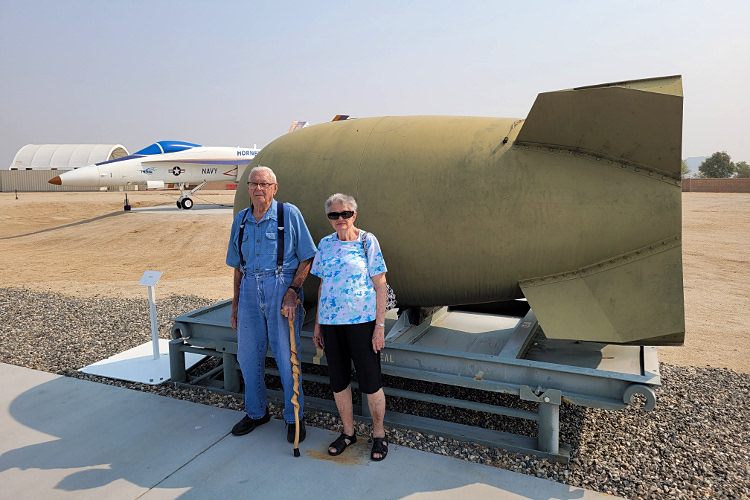
Here are my parents, in front of a “Fat Man” mockup
(missing part of the tail fin assembly).
I did not really appreciate until now that China Lake was part of the
Manhattan Project. The Fat Man was, of course, the
the Plutonium-based nuclear weapon that was dropped on Nagasaki, Japan
in World War II. This bomb used a spherical implosion of conventional
explosives to assemble the critical mass of Plutonium.
China Lake developed detonators and fabricated explosives that
were used in Fat Man.
China Lake also led the testing and development
of the bomb shell, which had tricky aerodynamics due to the
unconventional geometry.
Over 120 test shells, called pumpkins, were test dropped at China Lake and
Wendover, Nevada. This is an un-used shell.
My father started working as a civilian scientist/engineer at China Lake
in 1957, as a young man. His first task was tracking Sputnik and subsequent
Soviet satellites. They needed workers willing and able to stay up all night
to photograph the satellites when they passed by. The orbital periods of
Sputnik and kin was about 90 minutes. Using the background stars and
accurate timing, it was possible to determine the orbit precisely.
Bachelors, such as my dad, were probably ideal for this task.
My dad spent the rest of his career working for the base, retiring in 1991.
I grew up in Ridgecrest, located just off the base.
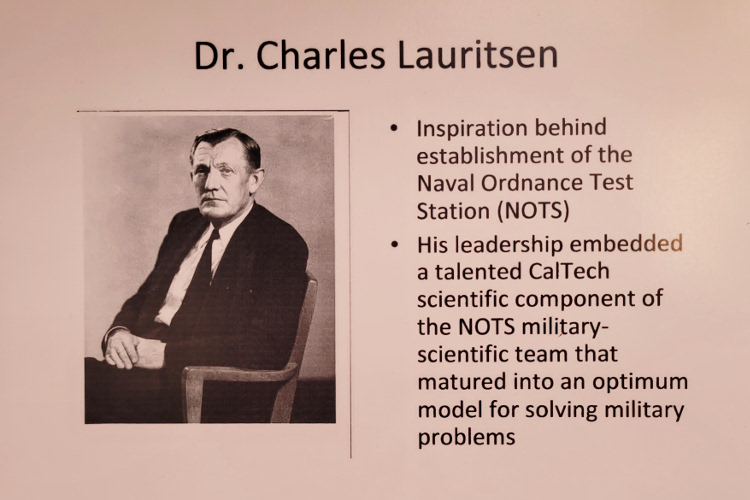
This is a photo from one of the exhibits at the museum.
Dr. Charles “C. C.” Lauritsen was the driving force behind the
establishment of the base at China Lake during World War II.
He was as an eminent researcher who did many things, including leading the
development of high-voltage accelerators for nuclear physics research.
He was the Ph.D. advisor of my Ph.D. advisor, Ralph Kavanagh at Caltech.
My lineage thus runs through C. C. Lauritsen via two paths.
He was also the Ph.D. advisor of William Fowler (see below).
When I was in high school, I did an internship at the Lauritsen Laboratory
on the base, which was named in his honor. I worked in a laser lab doing
stuff for Ronald Reagan's Strategic Defense Initiative aka
“Star Wars.”
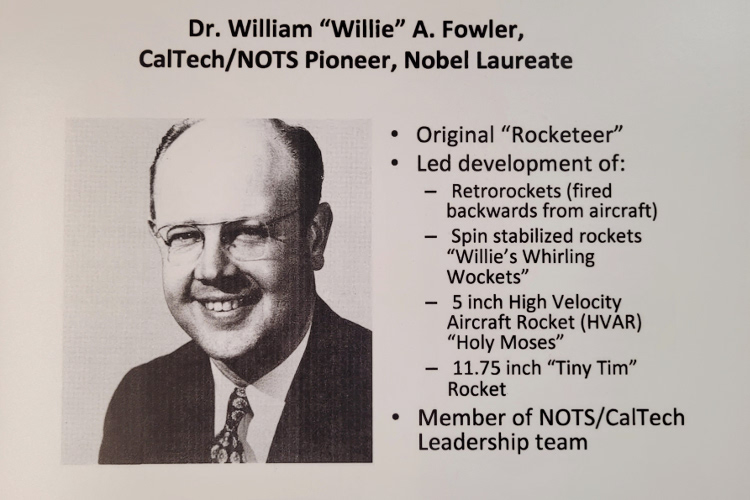
Another photo from the museum. William Fowler was a relatively young
physicist from Caltech during World War II. He also played an important
role in the early research at China Lake. He is best known for his later
work on the origin of the heavy elements, for which he was awarded
the Nobel Prize in 1983. I knew Willy, and worked together with him
and his postdocs on big-bang nucleosynthesis in a small way,
when I was a graduate student at Caltech in the late 1980s and early 1990s.
By the way, his nickname was always spelled “Willy,”
to the best of my knowledge. There are streets named after both Fowler
and Lauritsen on the base. I know this because I knew every street in
China Lake and Ridgecrest in the mid 1980s from being a pizza delivery driver.
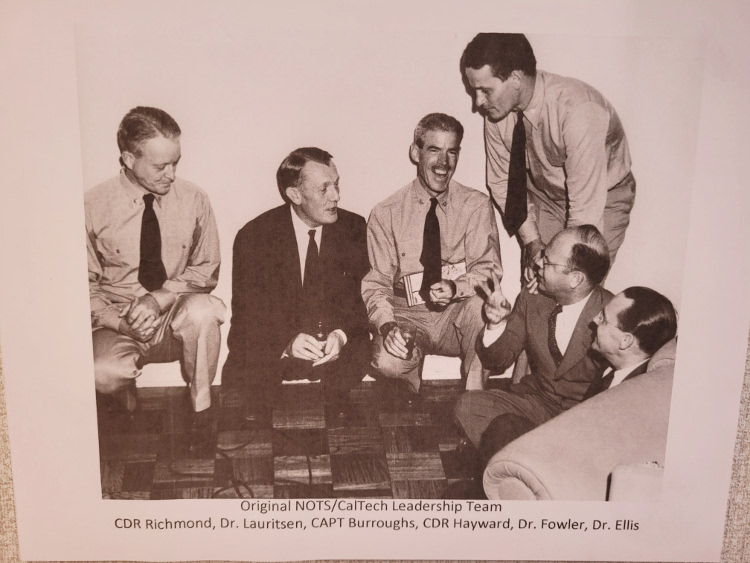
A photograph of the team that started China Lake. My high school is named
after Captain Sherman E. Burroughs. Captain Burroughs looks pretty
relaxed in this photo. He had every right to relax and enjoy a drink.
Earlier in the war, he fought valiantly
in several battles in the south Pacific, as a naval officer and aviator.
He was awarded two Silver Stars and one Distinguished Flying Cross.
He retired from the Navy at the rank of Rear Admiral.
Conditions were not ideal for finding reptiles while we were in Ridgecrest.
Besides being the late summer in a dry year, it was the middle of a
heat wave, with temperatures exceeding 110 F on some days.
We still tried a little bit.
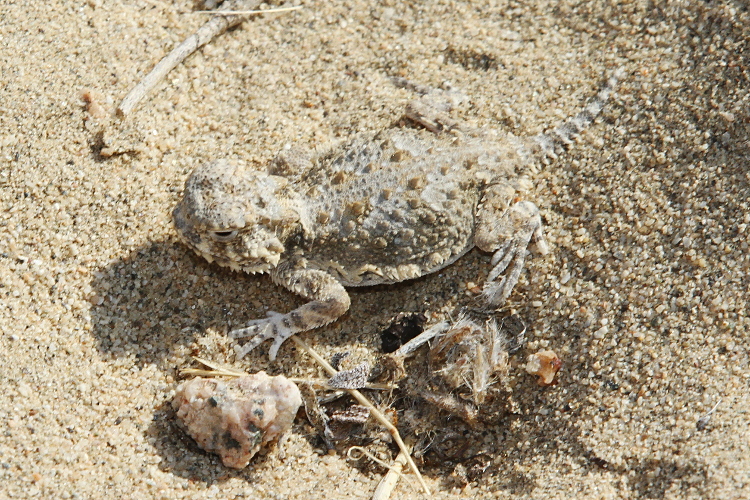
A tiny hatchling Desert Horned Lizard (Phrynosoma platyrhinos).
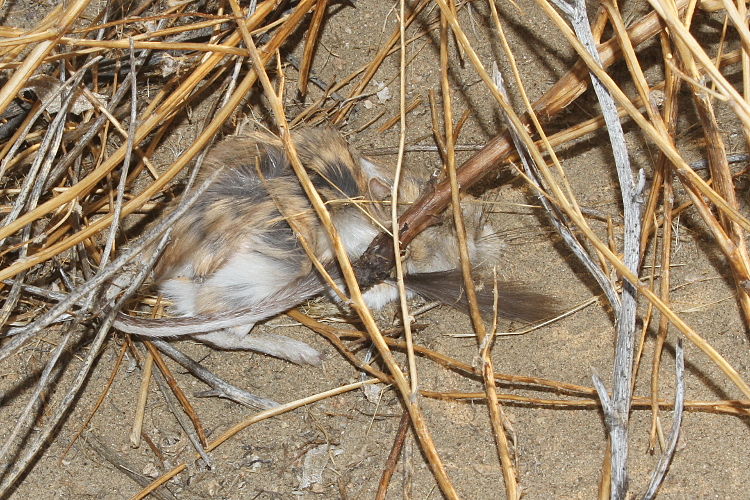
Early in the morning, a Mojave Rattlesnake buzzed me when I was about
15' away. It quickly went down a hole. It did leave behind this dead
Kangaroo Rat (Dipodomys). We checked back on it in about 45 minutes
and the K-Rat was gone.
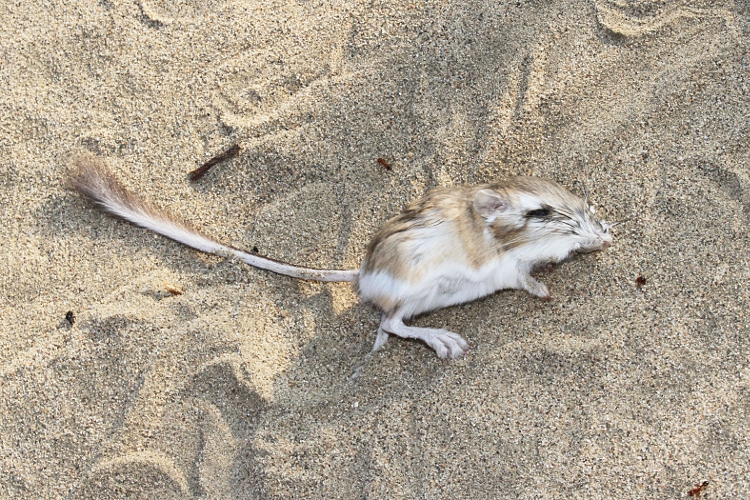
Another dead K-Rat. I don't know what happened here. There were the tracks
of a small snake all around it. Perhaps a young rattlesnake killed it and
then decided that it was too big to eat.
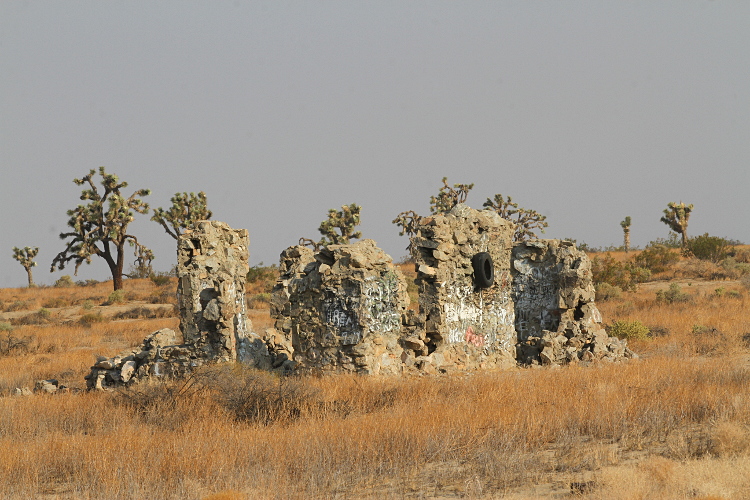
Some old ruins. Due to all of the smoke in the air from forest fires, the
lighting had a very strange quality to it.
That's it for the trip. I hope to return soon.
Return to Carl's photos.







